
The Bray-Barron House is a historic house in Eufaula, Alabama, U.S.. It was built prior to 1850 for Nathan Bray, who went on to serve in the Confederate States Army during the American Civil War of 1861-1865 alongside his three brothers. The house remained in the family until 1963. It was purchased by N. G. Barron and his wife Ruby Hutton Barron in 1965. It has been listed on the National Register of Historic Places since May 27, 1971.

The Rice-Semple-Haardt House is a historic house in Montgomery, Alabama, U.S..

The Miller-Martin Town House is a historic house in Clayton, Alabama, U.S.. It was built as a townhouse for John H. Miller in 1859, and it was designed in the Gothic Revival architectural style. In 1871, it was purchased by Judge Henry Clinton Russell, who served on Barbour County's probate court. In 1915, it was purchased by John Council Martin, who went on to serve as the mayor of Clayton from 1926 to 1930. It was later inherited by his daughter. It has been listed on the National Register of Historic Places since December 16, 1974.
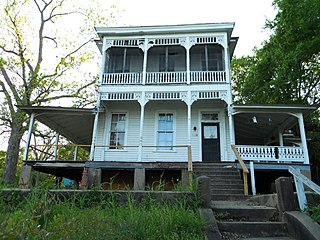
The Shapre-Monte House is a historic house in Phenix City, Alabama, U.S.. It was built circa 1890 by the Sharpe brothers. It was later purchased by Jacob G. Monte, a tailor from the Netherlands, and it remained in the Monte family until 1968. It has been listed on the National Register of Historic Places since November 3, 1983.
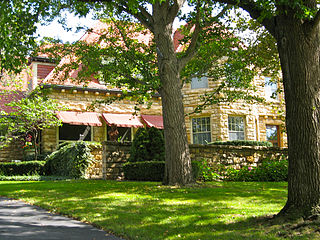
The Wolcott House is a historic house in Mission Hills, Kansas, U.S.. It was built in 1928 for John J. Wolcott, a grain dealer, and his wife Wynnogene. It was designed by architect Selby Kurfiss in the Tudor Revival style, with elements of French electricism. In 1939, it was purchased by Louis S. Myers, the vice president and treasurer of the Rodney Milling Company. By 1951, it was purchased by Samuel Sosland, the editor of Southwestern Miller. It was then purchased by David W. Gibson, the president of the Wolcott-Lincoln Company, in 1984, followed by Mark A. Morgan in 1997, and Michael Coughlin in 1999. It has been listed on the National Register of Historic Places since May 2, 2001.
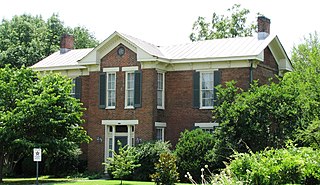
The Fite-Fessenden House is a historic house in Lebanon, Tennessee, U.S.. It is now home to the Wilson County Museum.

Ten Oaks, also known as the Peyton Rowan House, is a historic mansion in Jacksonville, Alabama, U.S..

The Willard-Clark House is a historic two-story mansion in Maryville, Tennessee, U.S.. It was built for B.F. Willard in 1886. The Willards owned the house until 1903, and it was purchased by J.L. Clark in 1905. In 1910, Clark added a portico, designed in the Classical Revival architectural style. They also the house to Elmer L. Hudson in 1929, who sold it to Granville R. Swaney in 1931. It has been listed on the National Register of Historic Places since July 25, 1989.

The John M. Rorex House is a historic house in Maryville, Tennessee, U.S.. It was built circa 1875 for John M. Rorex, a farmer. It was designed in the Italianate architectural style. It was purchased by Mary Armstrong in 1902, and by the Kimbroughs in 1953. It has been listed on the National Register of Historic Places since July 25, 1989.

The McNutt-McReynolds House is a historic house in Maryville, Tennessee, U.S..It was built circa 1900 for Robert G. McNutt, a merchant. It was designed in the Queen Anne architectural style. It was purchased by J. A. Reynolds in 1906, and by Dr. W. B. Lovingood in 1920. It was listed on the National Register of Historic Places on July 25, 1989, and was delisted on October 28, 2021.
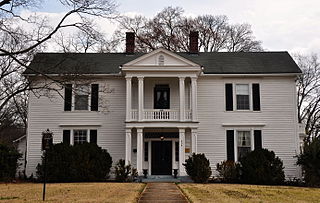
The Frierson-Coble House is a historic house in Shelbyville, Tennessee, U.S.. It was built in 1835 for Erwin J. Frierson, who was trained as a lawyer by James K. Polk, who went on to serve as the 11th President of the United States from 1845 to 1849. Frierson served as a member of the Tennessee House of Representatives in 1845. In 1888, the house was purchased by Dr Neely Coble, a physician; it was later inherited by his son, Thomas Coble, also a physician. By the 1980s, it still belonged to the Coble family. It has been listed on the National Register of Historic Places since April 12, 1982.

The John Green Sims House is a historic house in Wartrace, Tennessee, U.S..

The Ervin Lewis House is a historic mansion in Byram, Mississippi, U.S.. It was built for John Coon prior to the American Civil War As Coon came from the North, the Union Army did not destroy it during the war. It was purchased by Ervin Lewis, who was from South Carolina, after the war. It was designed in the Greek Revival architectural style. It has been listed on the National Register of Historic Places since December 1, 1989.
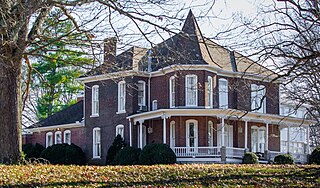
The Joe Chase Adams House, also known as The Ledges, is a historic house in Lewisburg, Tennessee, U.S.. It was built in 1900 for Joe Chase Adams, a dry goods merchant who served as the mayor of Lewisburg. It was designed in the Queen Anne architectural style. Adams's granddaughter, Mrs. Ernest Wheeler Henegar, Sr. purchased the house in 1943; she subsequently hired Bill Knox to redesign the interiors. It has been listed on the National Register of Historic Places since December 2, 1993.

The Alexander Woods House is a historic mansion in Jacksonville, Alabama. It was built circa 1853 for Alexander Woods, who served as the probate judge of Calhoun County from 1844 to 1880. It was purchased by Samuel W. Crook in 1866, and by Felix Tredaway in 1919. It was designed in the Greek Revival architectural style. It has been listed on the National Register of Historic Places since March 15, 1988.

Arnold-Harrell House is a historic house in Murfreesboro, Tennessee, U.S..


















